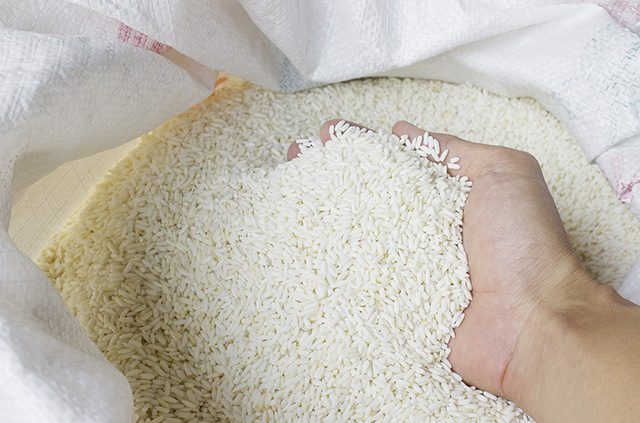SUMMARY
This is AI generated summarization, which may have errors. For context, always refer to the full article.

MANILA, Philippines – The National Food Authority (NFA) Council approved the importation of 250,000 metric tons of rice to arrive in June, or after the harvest season, to increase the government’s buffer stock in case of calamity or other emergencies.
“Standby authority to import 250,000 metric tons is approved and considering the timing of the harvest season, the importation should arrive after the said harvest season, first week of June,” said Cabinet Secretary Leoncio Evasco Jr on Monday, February 12.
To ensure the importation is “transparent,” Evasco said the NFA Council chose the method of government-to-private importation or open tender based on the same terms of reference in the 2017 government-to-private (G2P) procurement.
G2P importation is when the government buys imported rice from private importers who use permits under the minimum access volume (MAV) scheme to import rice. The NFA Council last year introduced guidelines to the scheme to ensure it is not abused.
The rice to come in June will be used to replenish the NFA buffer stock, which would ensure rice supply during times when calamity or natural disaster destroys sources of local rice.
“We’ll be expecting El Niño, typhoons to come so there is always a need for buffer stock. Our buffer stock has decreased to only two days,” said Evasco in a press conference.
The NFA management, led by Administrator Jason Aquino, had wanted the council to approve importation back in January but this was not approved because the council considered that there had been good harvest by local rice farmers at the time.
But on February 7, President Rodrigo Duterte, according to Evasco, gave him a “verbal” instruction to activate the NFA’s standby authority to import the 250,000 metric tons subject to the NFA Council’s “assessment on timing and mode of procurement.”
Evasco, on Monday, also admitted that he would have preferred to buy from local farmers instead of importing rice. However, the NFA cannot buy palay from local farmers now, with its current high price, because the agency is bound to purchase palay at only P17 per kilogram.
“If the palay produced by the farmers are good enough to meet the needs of the Filipino people, I would go for that. But unfortunately, the hands of NFA management [are] tied to a very low buying price set by the council in the previous years,” said Evasco.
The council was advised by the Department of Finance, Bangko Sentral ng Pilipinas, and National Economic and Development Authority against increasing the NFA’s buying price for palay from local farmers.
“Because the moment you increase the buying price of palay, it opens [the] floodgates for inflation for all commodities,” said Evasco, relaying the advice from the economists in the NFA Council.
He wants the economic team to review the need to increase the buying price for local palay.
In the meantime, said Evasco, the NFA management must be “very, very resourceful and very active in getting the right timing to buy” local palay.
Rice prices
As for prices of rice in the market, Evasco said these would not be affected by any increase in the government’s buffer stock.
But he expects the prices of rice to stabilize “soon” because of the continued importation by private rice importers under the MAV scheme.
Of the 728,475 metric tons of rice in the MAV rice importation program, 221,457 metric tons have already arrived while 507,017.60 metric tons are expected to arrive this year, he said.
“The next two tranches will arrive before the end of February 28, 2018 and not later than August 31, 2018,” said Evasco.
As of February, the country has 121 days of rice supply, equivalent to 3.8 million metric tons.
Rice production by local farmers has also started and “shall be at its peak [in] March of this year.” Evasco said local farmers are expected to produce 3.6 million metric tons of rice.
The MAV imports and boost in local rice production should lead to the lowering of prices of rice in the market, he said.
Asked about recent talks of rice shortage driving up prices of rice, Evasco said this is likely the work of private traders “hoarding” rice, thereby committing the crime of “economic sabotage.”
He called on NFA management to be “more proactive” in checking warehouses of rice traders to ensure there is no hoarding.
“If found to be hoarding, prosecute, arrest,” said Evasco.
Asked if he found NFA management lacking in its efforts to stop rice cartels and hoarding, he said he did not want to make any “definite conclusion” but wants an “evaluation of strategies done by the NFA.”
The rift between Evasco and NFA Administrator Aquino is well-known. Evasco had even called for Aquino’s dismissal after the administrator refused to comply with the NFA Council’s order to extend the MAV importation program. – Rappler.com
Sack of rice image via Shutterstock
Add a comment
How does this make you feel?
There are no comments yet. Add your comment to start the conversation.